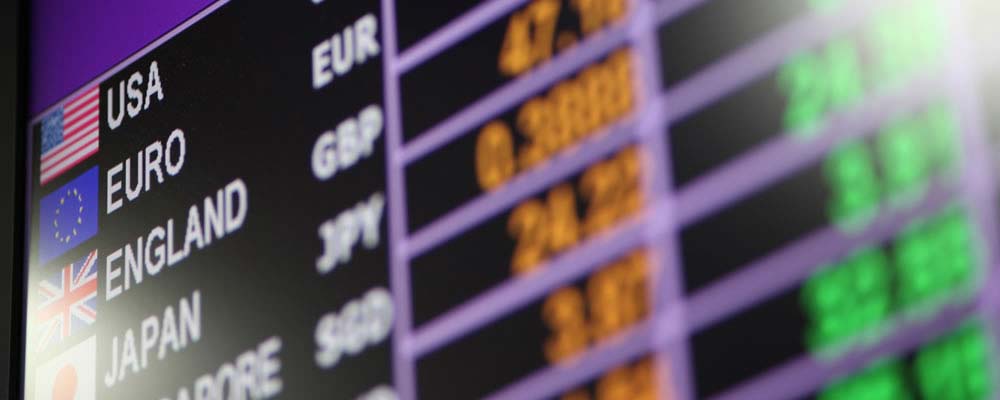During the Asian trading session Pound exchange rates slumped sharply, pushing the GBP USD pairing to a fresh 31-year low as the outlook of the UK economy remains muted.
- Flash crash dented GBP exchange rates – Fat finger trade and Hollande comments blamed for dramatic movement
- Euro muted despite strong German data – Higher industrial production failed to boost single currency demand
- US jobless claims fell to fresh low – USD boosted as hopes for strong Non-Farm Payrolls mounted
- Lower Fed rate hike odds saw GBP USD exchange rate resume recover ground – ‘Greenback’ weighed down by disappointing labour market report
Weak US Payrolls Boosted GBP USD Exchange Rate
Investors were unimpressed by September’s Non-Farm Payrolls report, with the headline figure proving weaker than expected and the Unemployment Rate unexpectedly rising. This dented the likelihood of the Fed raising interest rates imminently, something which helped to shore up the GBP USD exchange rate somewhat. Even so, the Pound remained decidedly fragile towards the close of the European session.
(Previously updated at 13:00 07/10/16)
Comments from European Commission President Jean-Claude Juncker have seen the GBP EUR exchange rate coming under fresh pressure. Juncker’s reiteration that single market access cannot be divorced from freedom of movement has seen the odds of a hard Brexit increase, discouraging investors.
(Previously updated 10:03 07/10/16)
GBP Exchange Rates Plunged Overnight as Brexit-Based Anxiety Dominates Outlook
There was drama for the Pound (GBP) during Friday’s Asian session, as a flash crash saw the currency plunge dramatically. As a result the Pound to US Dollar (GBP USD) exchange rate hit a fresh 31-year low of 1.18, shedding 6.1% in a two minute window before rebounding. Investors are uncertain as to the exact cause of this sharp slump, with an erroneous fat finger trade considered to be one of the possible explanations. Tough comments from French President François Hollande are also considered to have been a potential trigger for the move, with the prospect of a hard Brexit appearing to crystallise further.
Even so, Sterling has been quick to pull itself back from its worst levels, despite market sentiment remaining distinctly jittery. After falling through key psychological levels against both the US Dollar and the Euro (EUR) the outlook of the Pound does not seem overly positive at present, with Brexit-based worries unlikely to substantially ease in the near future. Further volatility could be seen on the back of August’s visible trade balance figure; with the figure having disappointed, GBP exchange rates could come under fresh pressure.
Euro (EUR) Struggled to Capitalise on Bullish German Production Data
Better-than-expected German industrial production data has failed to particularly improve the appeal of the Euro on Friday morning, despite output rising sharply on both the month and the year. This points towards greater robustness within the Eurozone’s powerhouse economy, indicating that the domestic manufacturing sector has remained resilient in the face of wider market uncertainty and turmoil. Nevertheless, with the fate of Deutsche Bank still causing concern and the Greek bailout coming back into the spotlight demand for the single currency has remained limited.
Demand for the Euro is likely to be driven by the movement of the ‘Greenback’, with the prospect of a Federal Reserve interest rate hike expected to drag on the common currency. Commentary from European Central Bank (ECB) board member Peter Praet could generate some support for the Euro, providing that he adopts a sufficiently hawkish tone on monetary policy. Should markets asses the chances of further ECB loosening as higher the Pound to Euro (GBP EUR) exchange rate could continue to recover, though.
GBP USD Exchange Rate Could Trend Lower on Strong US Payrolls
The US Dollar was boosted on Thursday in response to some solid jobless claims data, with the four-week average of initial claims falling to their lowest level since 1973. As this suggested that the US labour market remains tight markets expectations for September’s Non-Farm Payrolls report were raised, pushing the ‘Greenback’ higher across the board. Given that the week has seen a slew of positive domestic data, the possibility of a November interest rate hike from the Fed has been increasingly priced into the US Dollar.
However, this afternoon’s payroll report could see the GBP USD exchange rate boosted in the event of a downside surprise. If the headline figure fails to excite investors and registers a more limited increase in jobs then the chances of the Fed hiking imminently are likely to be seen as reduced. As Adam Cole, research analyst at RBC Capital Markets, commented:
‘We would also note that, with the implied probability of a hike by December now around 70%, and plenty of obstacles to negotiate before the December meeting, short-term USD upside may be limited, even on a strong report.’
Consequently the GBP USD exchange rate may be able to push higher ahead of the weekend, providing that market sentiment does not turn bearish once again.



